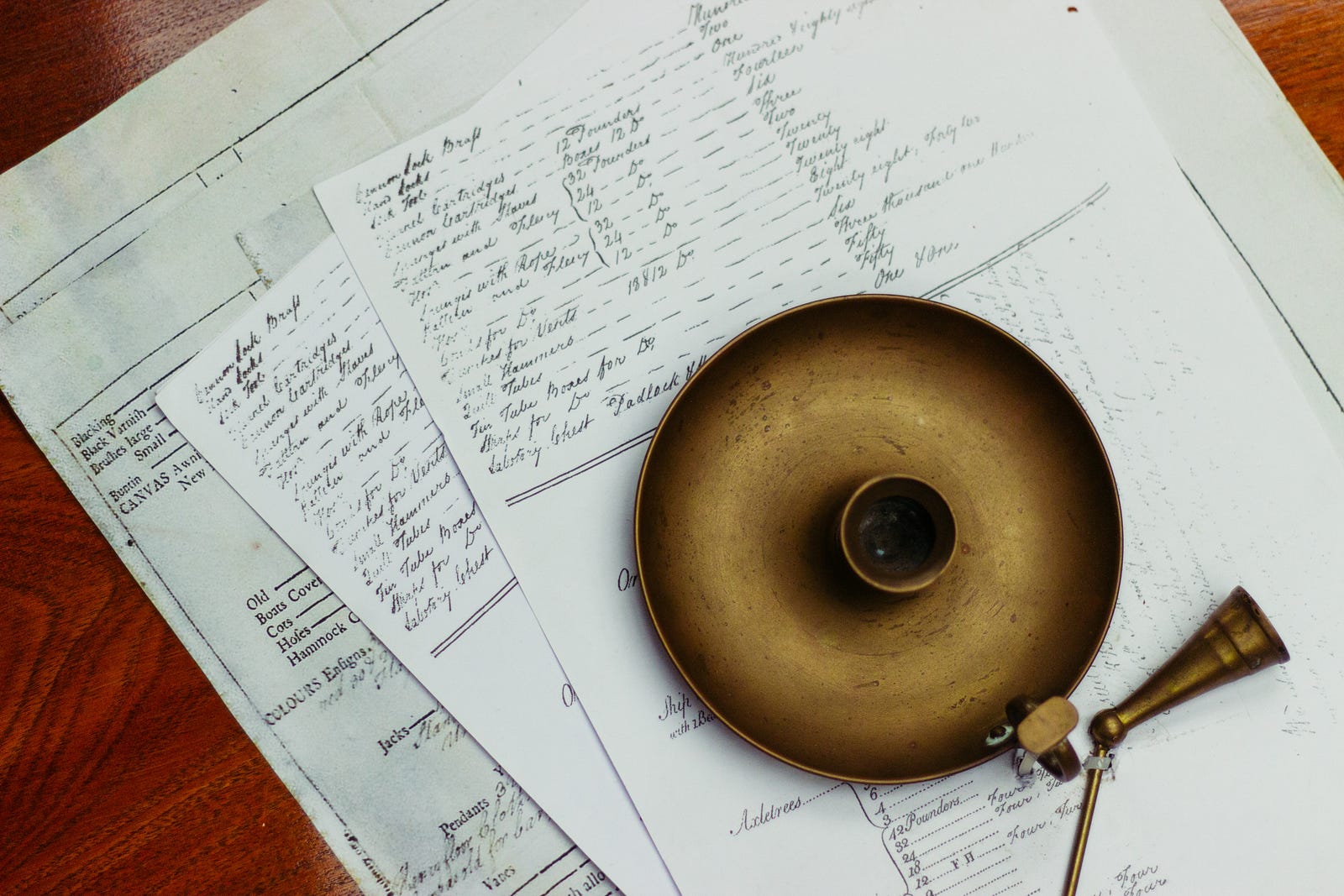A practice that successful leaders have kept for over 300 years

When you’re captaining a sailboat, you have a limited number of things in your control: the boat, your navigational decisions, and the crew you’ve chosen to help carry them out. Your success depends on how well you prepare and marshal these assets to meet the challenges you can’t control, like a sudden squall at sea. The same rules apply to business.
I’m far from the first entrepreneur to draw the analogy between sailing and captaining a company, but the lesson in leadership I’ve taken from sailing isn’t merely a metaphor. It’s an actual practice I’ve instituted at my startup: the captain’s log.
From its earliest form hundreds of years ago, when sailors would use a log line (a rope with knots tied at regular intervals) to determine their vessel’s speed, to more in-depth diaries recounting details like the weather, the rations used, and the health and morale of the crew, the captain’s log has always been about structured reflection. Each night, as the ship barreled onward, the captain would pause — without fail — to reflect on the day, providing an invaluable record of the voyage.
I discovered my passion for sailing the same year I co-founded my startup, Hello Alfred. And though I haven’t logged nearly enough hours at sea to call myself a captain, I borrowed this idea of taking time amid the relentless chaos around you to focus on regular, structured reflection.
As a startup CEO, it is hard to take time to step back, reflect, and learn. But making it a mandatory routine — and actually calling it a captain’s log — has imbued the practice with power and meaning, both for me and the company I run.
My captain’s log can take various forms. Sometimes it’s a voice memo in a cab or bit of misspelled gibberish. Sometimes it’s an extended journal entry. But I always structure it in three parts that force me to start organizing my thoughts, even if I only have a minute to do it. I start with a tweet-length recap of the day, followed by a more factually detailed recap of observations, expectations and outcomes, and how I felt. I conclude with “Lessons & Questions:” obvious learnings written in all caps, open-ended questions I’m mulling, and new ideas and priorities. The key is to do it, and do it again. Even when the content seems mundane and uninspired, the practice is meditative and opens my mind up to ambient ideas and solutions.
The process of writing is valuable in itself, but taking the time to review the dots I’ve collected has helped me to see how they may be connected. The log can be a treasure chest of ideas and facts when a new opportunity or question arises from my team, board, investors or customers. It’s helped me to react more quickly, reach out for help faster, follow up on a casual conversation, and in one case, connect a few dots that turned into a million dollar deal.
I’ve built these weekly reviews into my role as captain, looking at the past week’s manifest every Friday before close of business and again on Sunday night when my co-founder and I set the agenda for the week. We start each week with a Sunday night email to the crew, with thoughts often drawn straight from the log.
The daily log and weekly review have become a kind of sacred practice for the entire crew. Each Friday, the team gathers for a town hall to reflect on the obstacles we faced, the challenges we overcame, and the milestones that deserve to be celebrated. Every team member takes turns sharing their two “wins” — one professional, one personal.
The results are transparency and accountability that serve to unify the team through a meaningful practice that powerfully invokes tradition and reinforces the idea of being on a shared adventure.
It’s all too easy as a startup entrepreneur to focus on the horizon, ignore your blind spots, or forget to celebrate the team’s accomplishments. But just as in sailing, taking time to reflect can help navigate the waters ahead.
Marcela Sapone is the co-founder and CEO of Hello Alfred.
